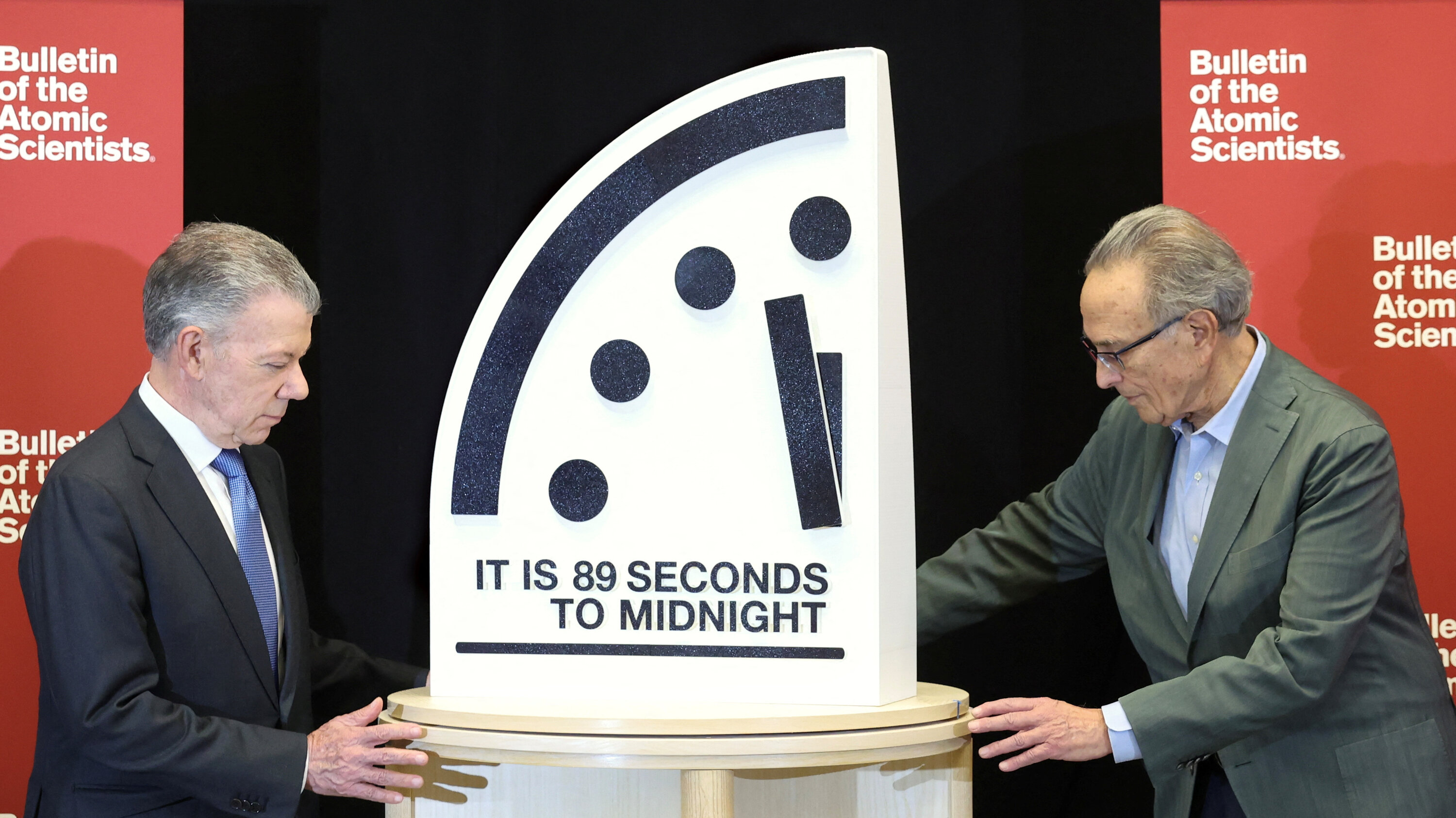
In January, in response to a question about US-China relations, the President said, “Tremendous amounts are being spent on nuclear, and the destructive capability is something that we don’t even want to talk about .… So we want to see if we can denuclearize, and I think that’s very possible.”
Contradicting that statement, the White House has asked for a trillion dollars for “national defense” over the coming few years, indicating the administration’s true priorities.
Current wars and conditions in the world make our situation ever more precarious, with nuclear danger rising worldwide, with threats by Vladimir Putin in Russia, by the Netanyahu government in Israel now in armed conflict with Iran, and Trump, who is publicly flirting with the idea of the US directly entering that conflict.
These threats and tensions between nuclear-armed countries are upending even modest treaties and norms, pushing us ever closer to the very real prospect of nuclear war.

On January 28 the Science and Security Board of the Bulletin of Atomic Scientists move the hand on its Doomsday Clock from 90 to 89 seconds to midnight, the closest it has ever been to catastrophe. Because the world is already perilously close to the precipice, we have to take a move of just a single second on that scale as indicating extreme danger, an unmistakable warning that every second of delay in reversing course increases the probability of global disaster.
The countries that possess nuclear weapons are increasing the size and roles of their arsenals, investing hundreds of billions of dollars in weapons that can destroy civilization. The nuclear arms-control process is collapsing, and high-level contacts among nuclear powers are inadequate given the danger at hand. Alarmingly, it is no longer unusual for countries without nuclear weapons to consider developing arsenals of their own, undermining longstanding nonproliferation efforts and increasing the ways in which nuclear war can start.
Our fervent hope is that leaders will recognize the world’s existential predicament and take bold action to reduce the threats posed by nuclear weapons, climate change, and the potential misuse of biological science and a range of emerging technologies.
Blindly continuing on the current path is a form of madness. The US, China and Russia have the collective power to destroy civilization, as well as the prime responsibility to pull the world back from the brink. But they can do so only when their leaders seriously enter good-faith discussions about the global threats outlined here. Despite their profound disagreements, they should take that first step without delay. The world depends on immediate action.
Please join Prescott Peacebuilders at 1:30pm on Sunday, August 10 for the 80thanniversary remembrance of the atomic bombings of the Japanese cities of Hiroshima and Nagasaki, in the Founders Room of the Prescott Public Library.
The featured speaker will be Arizona native George Brown PhD, a political scientist specializing in China and Asia more broadly. Following a 2003 workshop on the atomic bombing at the Hiroshima Peace Memorial Museum he published an article and developed a lecture on the subject that he used in his International Relations and Japanese Politics course every semester for twenty years.
The organization will also host a combined UN International Day of Peace Celebration and Peace Concert on September 21.

